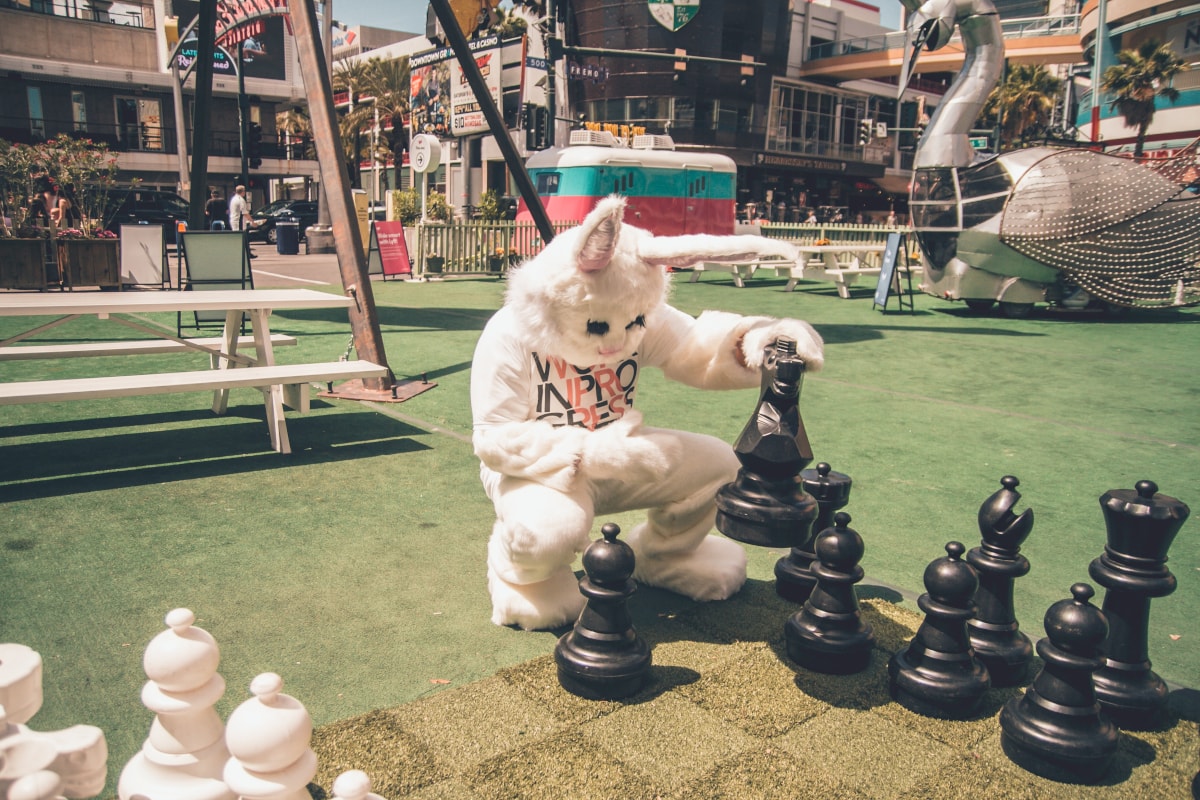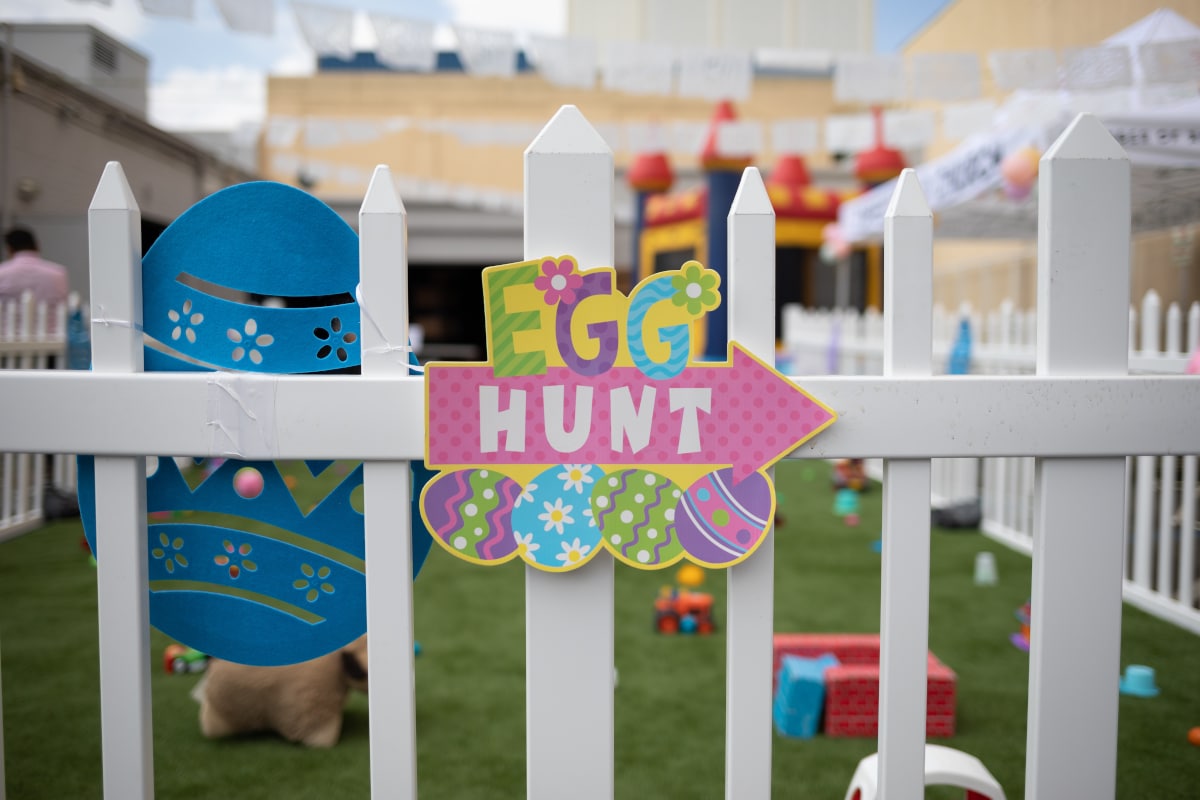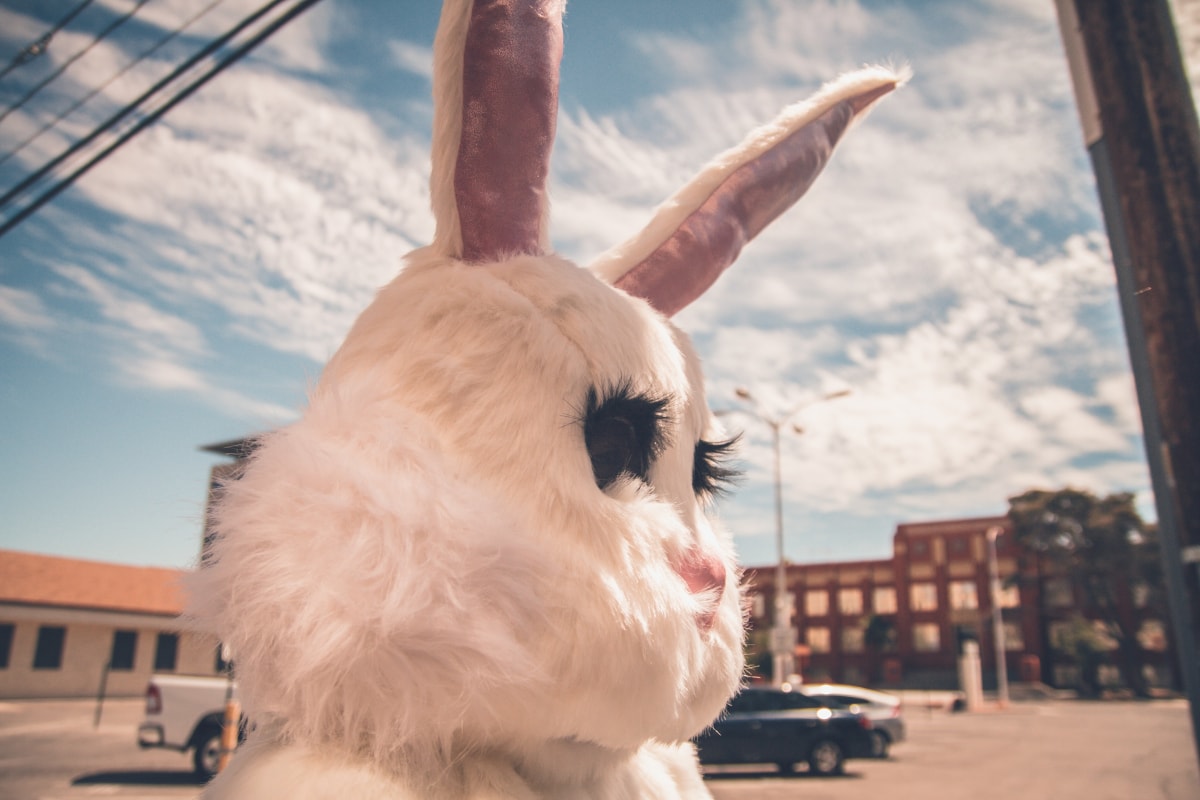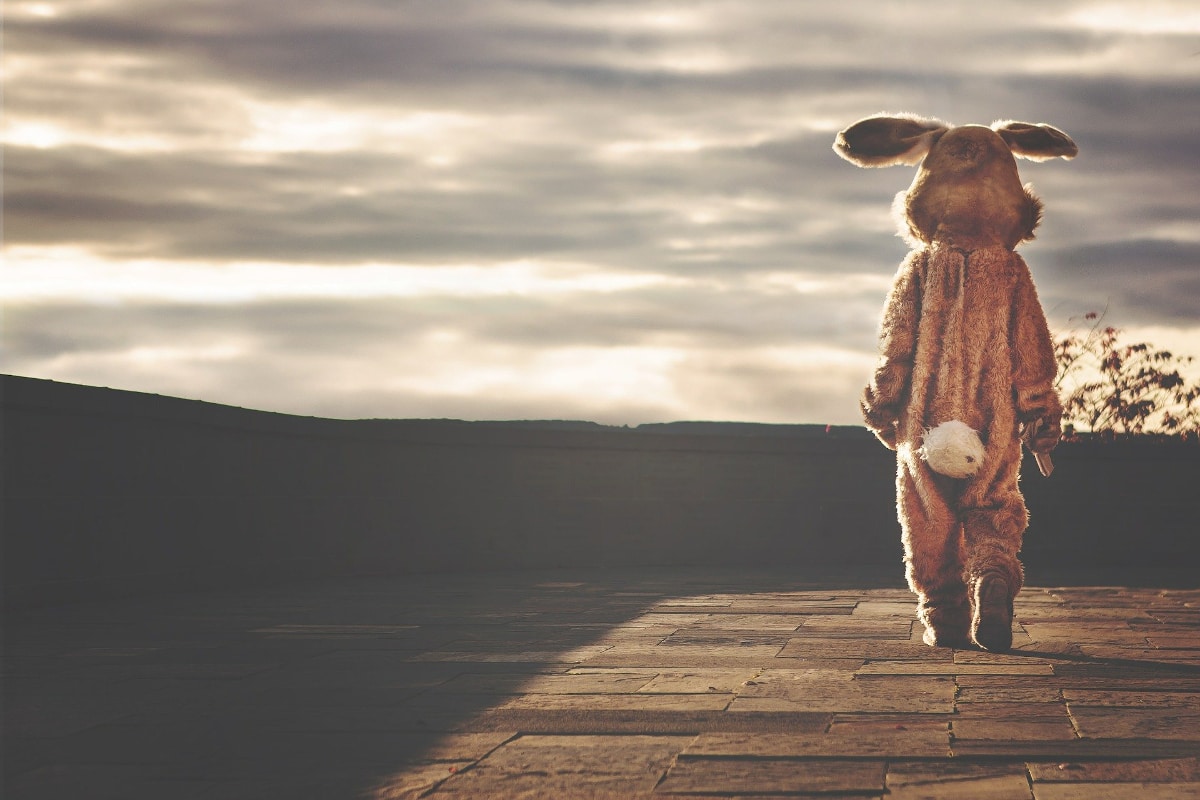Spring is here! Flowers are blooming. Taxes are due. And somewhere out there is a field hopping with bunnies. Speaking of bunnies, April 12th is Easter Sunday and we all know what that means. Children will be bouncing downstairs, searching for baskets of goodies left by the Easter Bunny. But who is this famous herbivore? Where does he come from? And where can we pillage his stash of Cadbury Creme Eggs? Read on to learn more about the incredible history of the Easter Bunny.

Duchess Rosilinda von Lindenberg
The author of German Girl in America stated that the Easter Bunny tradition was started by Duchess Rosilinda von Lindenberg. Legend has it she was forced to flee her home with her small children during a war. They found sanctuary in a small German village that didn’t have many resources in the way of food.
As an act of gratitude, the duchess had chickens and eggs brought to the village. She colored the eggs by boiling them in water mixed with moss. She then hid the eggs throughout the village for the local children to find. Often during the search, bunnies were seen running through the grass, startled by the children. It was after repeated sightings of fleeing bunnies that the children became convinced that the bunnies were hiding the eggs.
Read More: Owning a Bunny Beyond Easter
The Easter Bunny Comes to America

Sometime during the 1700s, German immigrants brought the tradition of the Easter Bunny – also known as Oster Haws, according to History.com Editors – to America. The tradition quickly spread across the United States and over time, the tradition of hiding eggs changed to include a variety of chocolate and jelly beans. According to Reader’s Digest, it was during the 1930s when people recognized that the shape of the jelly bean was similar to an egg. That’s when the Easter Bunny began adding jelly beans to his mix.
Read More: Easter Egg Stuffers: 12 Alternatives to Candy
The Christian Connection

According to History.com Editors, eggs symbolize Jesus rising from the tomb. In many cultures, eggs were forbidden during Lent. To celebrate the end of the Lenten season, families would decorate the eggs and then feast on them on Easter morning. As for rabbits, they’re known to represent life and procreation in many pagan celebrations. An article published on Seeker.com stated that many of the pagan celebrations for Spring and associated symbols, such as the rabbits, were incorporated into the Christian celebration of Easter when Catholicism became the official religion in Germany during the 15th century.
Read More: The Ultimate Easter Reading Guide for Kids
Little-Known Facts About Easter Traditions

A recent article published by House Beautiful mentioned a few interesting facts about Easter. First, some Catholic churches die eggs red to represent the blood of Christ. Also, there are only 12 states in the U.S. that honor Good Friday as a holiday. And last, during the 1800s it was believed that buying new clothes to wear on Easter would bring good luck.
According to DoSomething.Org, the first White House Easter egg hunt was celebrated in 1878 and has been an ongoing tradition ever since. Also, the Easter holiday is the second biggest candy-selling day of the year, right behind Halloween. The first story ever written about a rabbit hiding eggs in a garden was published in 1680.
While Easter is celebrated around the world, not all countries celebrate this holiday the same way. Reader’s Digest published an article mentioning how different countries celebrate this day. India is one such country. For those who celebrate Easter in Goa, India, the day is marked with carnivals and street performances. In Florence, Italy, Easter is celebrated with a fireworks display. And in many countries throughout Latin America, Easter is celebrated by burning Judas – the disciple who betrayed Jesus – in effigy.
Read More: Three Lesser-Known Facts About Easter

The history of the Easter Bunny spans across many centuries. Whether it was started by a duchess who wanted to thank a small, German town for their hospitality or it was adopted from a pagan celebration, the joy and wonder this holiday brings to small children across the globe can’t be denied. This Easter, sit down with your children and share the story of the Easter Bunny with them. And because Santa shouldn’t have all the fun, don’t forget to leave out a plate of carrots…..or lettuce, just in case the Easter Bunny is on a low-carb diet.
WANT TO READ MORE?
Check out this article on BEYOND THE BASKET: TEACHING CHILDREN THE HISTORY OF EASTER
💖 NEWSLETTER: DAILY READS IN YOUR INBOX 💖
Sign up to receive our picks for the best things to do, see and buy so you can relax and focus on more important tasks! Let us help you be the best version of yourself you can be!
GET MORE FROM DAILY MOM, PARENTS PORTAL
Newsletter: Daily Mom delivered to you
Facebook: @DailyMomOfficial
Instagram: @DailyMomOfficial | @DailyMomTravel | @BestProductsClub
YouTube: @DailyMomVideos
Pinterest: @DailyMomOfficial
📌 LOVE IT? PIN IT!📌

Photo Credits: Unsplash.com | Pixabay.com
Sources: German Girl in America | History.com Editors | Reader’s Digest | | Seeker.com | House Beautiful | DoSomething.Org | Reader’s Digest









































